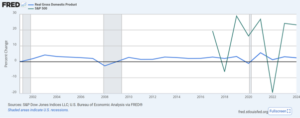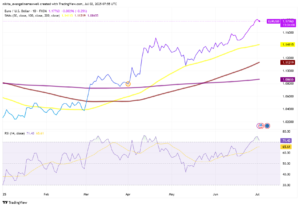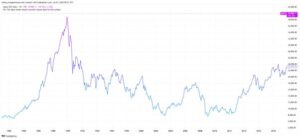Current Context
Investors are widely expecting the Federal Reserve to deliver its final rate cut of 2024 this week. However, attention has already shifted to 2025, as questions arise about whether the Fed might rethink its plans for the pace of rate cuts that year.
A key indicator for this speculation lies in the Fed’s quarterly “dot plot”, which outlines each official’s predictions for the federal funds rate. Back in September, when the Fed initiated its first rate cut in over four years, the dot plot projected two additional rate cuts in 2024 and four modest reductions in 2025.
Now, amid persistent inflationary pressures and cautious remarks from Fed officials, doubts are emerging about whether these 2025 projections remain feasible.
Challenges Facing the Fed
-
Stubborn Inflation
Inflation has remained stickier than anticipated, holding steady at elevated levels in recent months. According to the latest data, the U.S. Consumer Price Index (CPI) rose 2.7% year-over-year in November, slightly higher than the 2.6% increase in October.Core inflation, which excludes volatile food and energy prices, showed a 3.3% annual increase for the fourth consecutive month. Additionally, wholesale prices for November also exceeded expectations, underscoring the persistence of inflationary pressures.
-
Resilient Job Market
Contrary to earlier forecasts, the U.S. labor market showed no signs of softening in late 2024. Strong employment figures have given the Fed more leeway to delay aggressive rate cuts. -
Policy Uncertainty with New Administration
With a new presidential administration taking office, the Fed faces potential challenges from fiscal policy shifts and other economic changes under the Trump administration, adding another layer of complexity to its decision-making process.
Differing Views Among Analysts
Opinions are divided among analysts regarding the Fed’s approach to 2025 rate cuts:
The Cautious Camp
Former Cleveland Fed President Loretta Mester has suggested that the pace of rate cuts in 2025 may slow, forecasting two to three cuts instead of the originally planned four. She noted that “slowing down makes sense” given current economic conditions and inflationary trends.
The Optimistic Camp
Other economists believe the Fed will stick to its original forecast of four rate cuts in 2025. Luke Tilley, chief economist at Wilmington Trust, argued that the Fed’s baseline expectation for inflation to decline remains intact, and current interest rate levels are still restrictive enough to curb economic overheating.
Powell’s Pragmatic Approach
Fed Chair Jerome Powell has emphasized a flexible approach to policy adjustments. In early December, Powell remarked that the economy’s stronger-than-expected performance allows the Fed to be “a little more cautious” when considering future rate cuts.
His comments highlight the Fed’s willingness to adapt its policies based on evolving economic conditions, underscoring the uncertainty surrounding the pace of rate reductions.
Implications for Markets
-
Impact on Forex Markets
A slower pace of rate cuts could bolster the U.S. dollar, particularly against currencies from economies facing slower growth or more accommodative monetary policies. -
Inflation as a Key Driver
Upcoming inflation reports will play a crucial role in shaping the Fed’s policy decisions. If inflation remains stubbornly high, the Fed may delay rate cuts further into 2025. -
Market Volatility
The Fed’s potential policy shift could trigger fluctuations in bond yields, equities, and currency markets, as investors adjust their expectations for interest rate movements.
What Lies Ahead?
The Fed’s 2025 rate strategy appears to be at a pivotal juncture. With persistent inflation and a resilient labor market, the central bank is likely to approach its future rate adjustments with greater caution. While some experts believe the Fed will maintain its original forecast, others argue for a slower pace to ensure economic stability.
For forex traders and global investors, the Fed’s upcoming decisions will have far-reaching implications for dollar strength and overall market sentiment. Over the next few months, inflation trends, economic performance, and policy announcements will be key drivers to watch.
Conclusion
The Fed is navigating a complex economic landscape as it considers adjustments to its 2025 rate plans. Whether the central bank sticks to its original path or adopts a more cautious approach, its decisions will significantly influence global markets. Investors must stay attuned to key economic data and policy signals to navigate potential market shifts effectively.
Key Takeaway: The Fed’s potential shift in 2025 rate policy underscores the importance of closely monitoring inflation and economic indicators as they shape the future direction of monetary policy.





